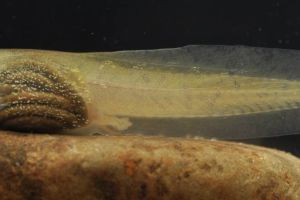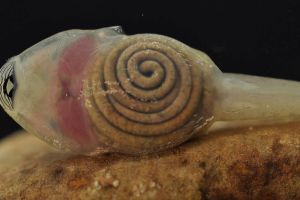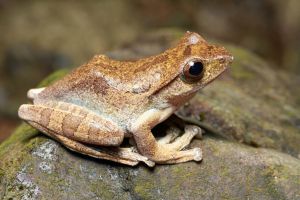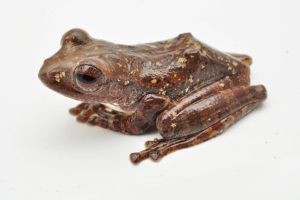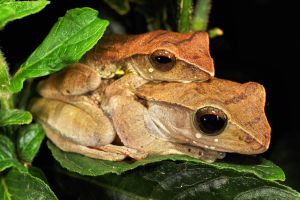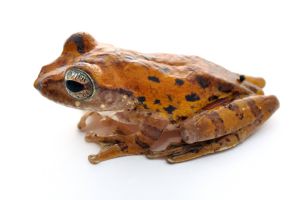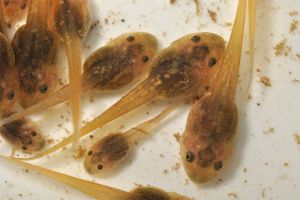
Frogs of Borneo

Frogs of Borneo

Frogs of Borneo

Frogs of Borneo

Frogs of Borneo

Frogs of Borneo

Frogs of Borneo

Frogs of Borneo

Frogs of Borneo

Frogs of Borneo

Frogs of Borneo
fasciatus
Banded Tree Frog
Leptomantis fasciatus has been reported from Sarawak, Sabah, and Kalimantan, but its true distribution remains poorly known—much like many other Bornean frogs. The species seems to occur in specific localities while being absent from others, and its habitat preferences are still unclear. Very little is known about this frog because adults spend most of their lives high in the canopy, descending only for reproduction. It is a medium-sized treefrog: according to Inger (1966), males measure 40–45 mm and females 50–55 mm in snout–vent length.
This species shows striking variation in coloration. Further genetic work will be needed to determine whether this is simply intraspecific variation or evidence of distinct evolutionary lineages. Typical individuals are brown to amber with dark markings or blotches on the back, often with a band between the eyes and transverse stripes across the thighs. Cream spots on the upper lip and below the eye are common.
The fingers and toes end in large adhesive discs. The toes and outer fingers are fully webbed. The snout is pointed and slightly angled. The skin is smooth to slightly granular, without the larger tubercles or warts seen in some related species. The tympanum is relatively small—smaller in proportion to the eye than in L. rufipes—and the snout is relatively shorter than in L. harrissoni.
Males call from 10–20 m high in the trees. The call is rather soft, consisting of a sharp click followed by a raspy trill. For breeding, which takes place in forest ponds or ponds at the forest edge, the frogs descend from the canopy. Tadpoles have only rarely been observed, but when found they were in permanent or temporary ponds with soft bottoms. They were seen resting on the substrate and grow to a relatively large size, reaching up to 40 mm in total length.
Leptomantis fasciatus most closely resembles L. harrissoni and L. rufipes. Leptomantis fasciatus breeds in swamps, whereas L. harrissoni is restricted to tree holes, clearly separating the two species ecologically.
Version tracking
-
23.09.2025
updated
